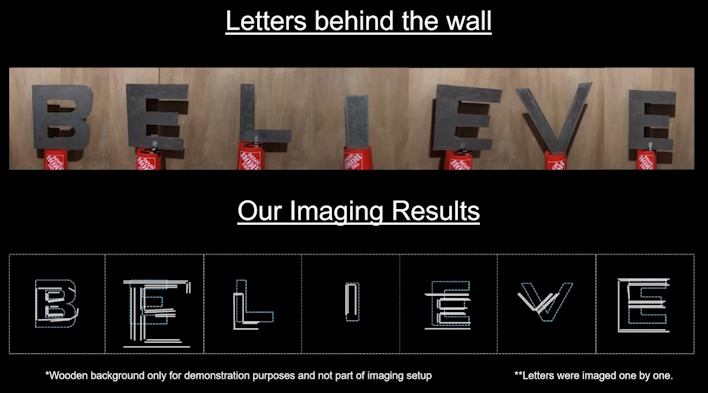Researchers Show How Wi-Fi Signals Can Be Utilized To Read Through Walls

Led by Professor Yasamin Mostofi, the UC Santa Barbara team has proposed a new means by which one could image still objects using WiFi signals. This method is based on the “Geometrical Theory of Diffraction and the corresponding Keller cones to trace edges of the objects,” which, in short, means that signals that impact the edge of an object are diffused and can be observed to extrapolate the footprint of the object.
The researchers explain this method more in-depth in their work, but this process is interesting because it can work with off-the-shelf WiFi-enabled products and does not need any prior radio frequency data for machine learning training. Furthermore, this is imaging accurate enough to “image and read (i.e., classify) uppercase letters of the English alphabet, even through walls, thus enabling the first demonstration of WiFi reading through walls,” which you can see demonstrated in the video above.

While this has some impressive implications, some interesting privacy concerns arise from this as well. Law enforcement or militaries could use this to determine who or what might be in a house without necessarily needing a warrant. Alternatively, cybercriminals could use this technology to assist thieves in robbing a house if the detail is high enough.
At the end of the day, the time and effort required for this process, as it stands, may be rather exclusive, therefore somewhat reducing the privacy concerns. However, it is only a matter of time until Mostofi’s team’s novel method of RF imaging can be perfected and streamlined for broader use, allowing anyone to “capture details previously not possible with WiFi.”

